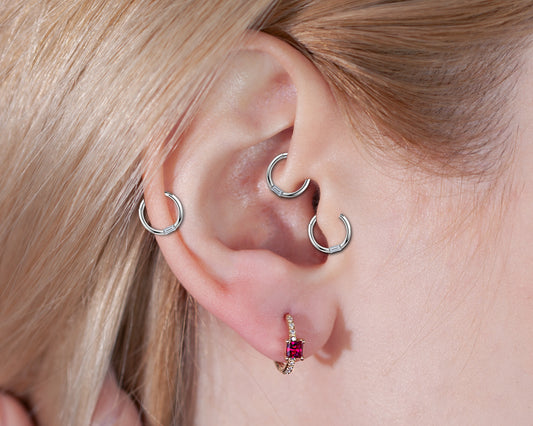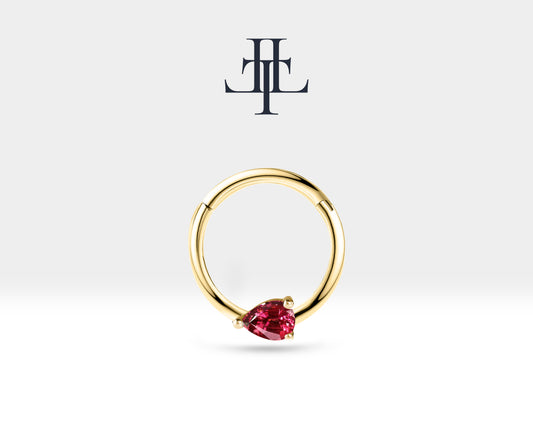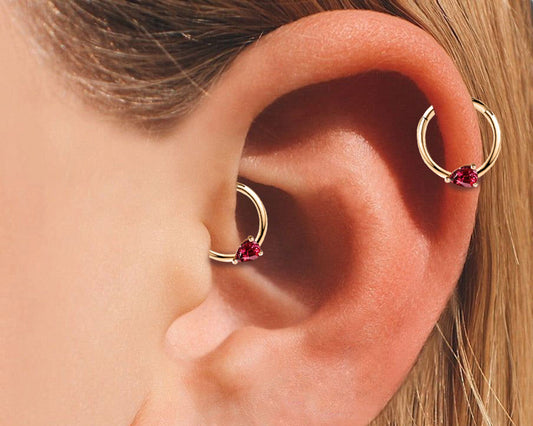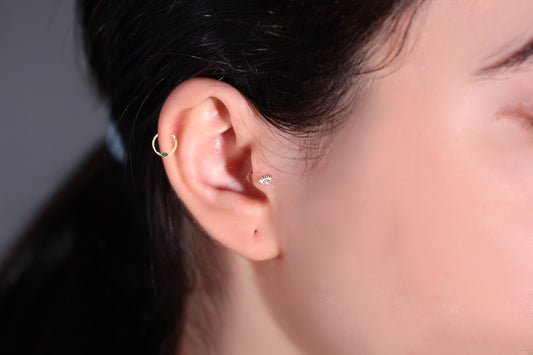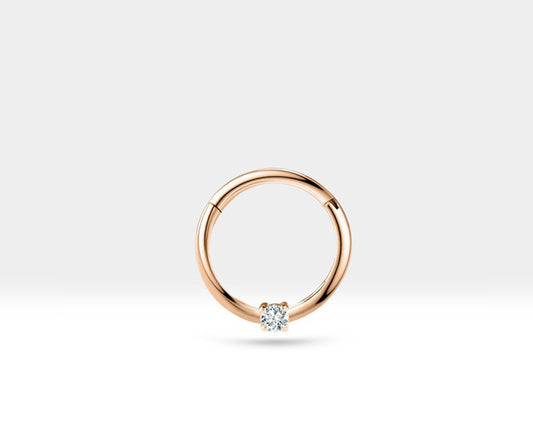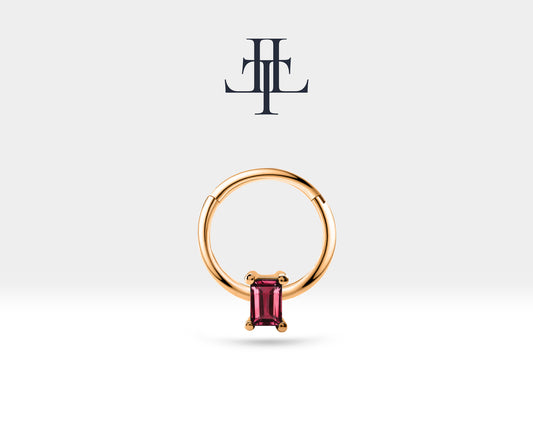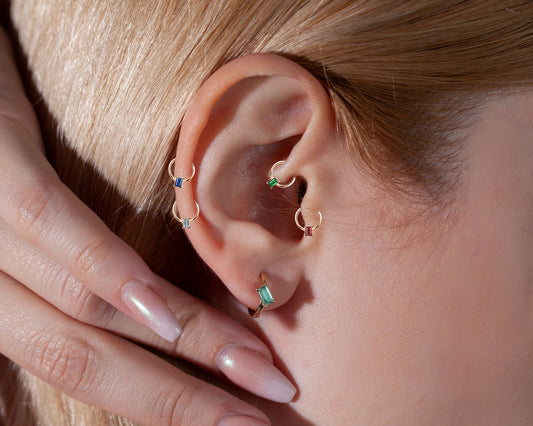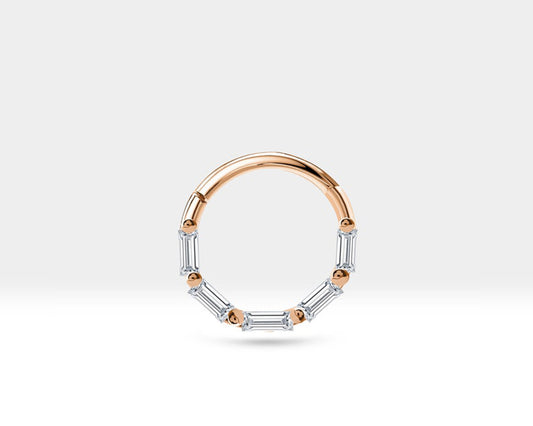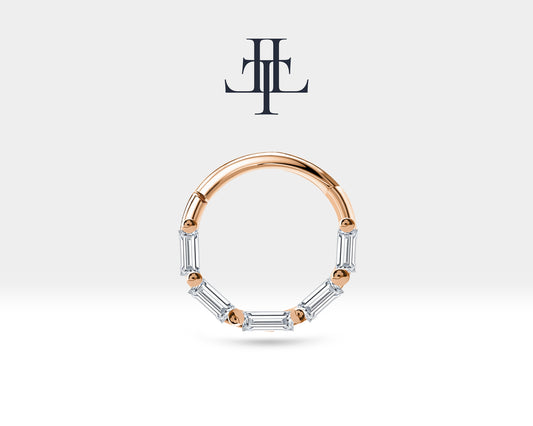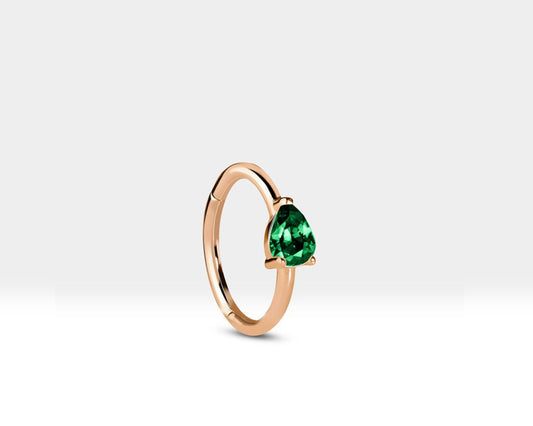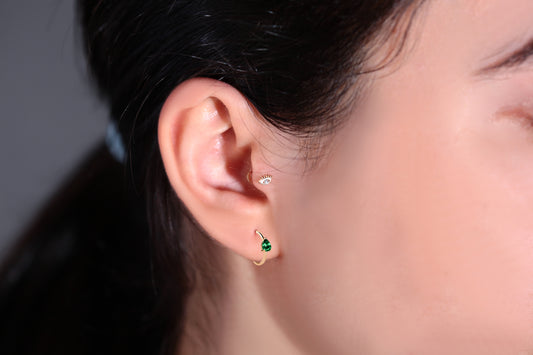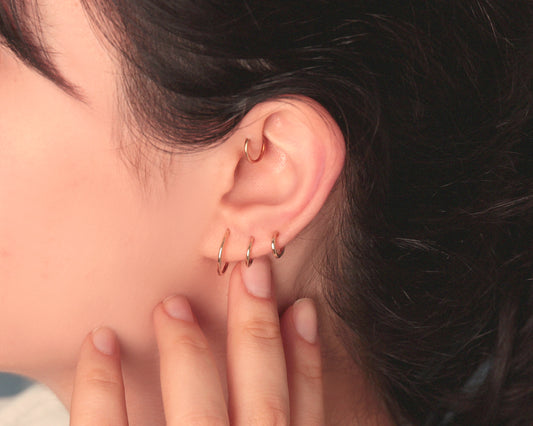The most popular red gemstone of all time, rubies have been prized and coveted for centuries. Their durability and hardness make them an ideal gemstone for daily wear. Rubies are perfect for engagement and wedding rings, and pair well with diamonds
Rubies are formed at incredibly high temperatures in the depths of the earth when the mineral corundum is exposed to chromium oxide. This exposure happens deep in the cracks and crevices of large rock formations and mountain ranges.
The word ruby comes from the Latin word, ‘ruber’, meaning red, derived from its rich and vibrant hue.Natural rubies are among the highest priced and most sought-after of all colored gemstones.
Natural rubies are found primarily in Myanmar, Thailand, parts of Australia, and Afghanistan, however rubies have also been found throughout Europe, South American and regions of North America.
Here’s how to buy ruby without getting ripped off.
What should You pay attention to when choosing a Ruby?
Tip 1: The Color of Your Ruby
Color is the most important factor when choosing a ruby. Rubies are made of the same material as sapphire – corundum. Interestingly, all other corundum colors are called sapphire except red, which has the prestige of having its own name – ruby.
The red color of the ruby is its distinguishing feature, but rubies often have secondary colors such as pink, purple or orange. The more purple or orange, the less valuable the stone.
The most desirable of all colored rubies is the pigeon blood red which has a very vivid red color. Pigeon blood rubies are rare and valuable as they generally contain no secondary colors.
The GIA grades color according to hue, saturation, and tone:
- Hue refers to the basic color of the stone. A quality ruby should always have a red hue.
- Saturationrefers to the intensity of the color. This is graded on a scale from 1-6. If the intensity of the color is low, it will appear as a brown or grayish color (1) while a higher intensity is evident in a vibrant and strong color (6).
- Tone refers to how dark or light the color of the stone is, with a colorless being 0 and black being 10 on the grading scale.
- A high-quality ruby will have a dominant hue of red, vivid saturation (6) and a dark tone (6). On paper, the ruby will be noted as having a color grade of R 6/6. Such a ruby would be very valuable and command a higher price.
Tip 2: Understanding Clarity
All natural gemstones host small inclusions. These inclusions can be anything from small gas bubbles, liquid, or trace amounts of other minerals which appear as cracks or lines through the stone.
When checking the clarity of a ruby, the most important factor is to look out for visible inclusions. If the ruby is eye-clean or has inclusions in hidden areas, then this will not affect the beauty of the stone.
However, check to ensure that any inclusions are not in areas that may compromise the integrity of the stone. The clearer the stone and fewer the inclusions, the more expensive it becomes.
In some cases, inclusions can cause a star-like effect on the ruby. This is called asterism and is caused by intersecting needle-like inclusions within the stone. The star can appear as a three- or six-pointed star on the surface of the stone and are usually very symmetrical.
Tip 3: Check for EnhancementsMost rubies on the market today will have had some form of treatment done to them, whether it be to enhance the color or to provide greater clarity in the stone.
Heat TreatmentThe GIA states that you should assume your ruby is heat treated as this is a common industry practice. It does not bring down the value of the stone but rubies with a report that state that there is no evidence of heat are very rare and therefore very expensive.
Heat treatments are conducted to promote color and clarity of the stone and remove any rutile that could be altering the appearance of the stone. The ruby is heated to temperatures up to 1800 degrees Fahrenheit, with the heat livening up the color of the stone. This treatment does not have a negative effect on the durability or value of the stone and is widely accepted in the market.
Glass Filled Ruby TreatmentThis treatment, which has become more popular in recent times, is conducted by taking low grade rubies and making them appear as a higher-grade ruby.
The process includes bleaching the ruby, filling any cracks or fissures with glass and then coloring the stone to give it its vibrant red color. These stones, while they appear beautiful, can be less stable and more likely to break when exposed to heat or chemicals. They are also less valuable.
Flux Healed RubiesThis is a treatment used to stop rubies sticking together during the heating process. The rubies are coated with a layer of flux material which will protect it from sticking.
The benefit of this process is the ability of this flux material to penetrate into the depths of the stone and fill in any cracks and crevices. It does diminish the value of the stone slightly because it is a foreign material being inserted into the stone.
Tip 4: Picking the Carat Size
Rubies are often found in less than one or two carats. Rubies larger than this are incredibly rare and would therefore be very expensive. Due to their vibrant color and elegant look, even small rubies can be utilized in a unique way to provide glamor and class to a piece of jewelry.
If you are in search of a large ruby, you may consider looking at synthetic rubies. These can often be larger in size than naturally occurring rubies and more cost effective.
Tip 5: Know the Ruby OriginRubies are mined in certain locations around the world, the most famous being Asia and Africa, including Myanmar, Cambodia, Thailand, Sri Lanka, Mozambique, Zambia and Pakistan. Of these, rubies from Burma, now known as Myanmar, have always been valued as the finest rubies and have been mined there for over a thousand years.
Burmese rubies are now extremely rare and generally more expensive. An unheated Burmese ruby can cost almost $1 million per carat at auctions! They have a stunning appearance with a strong fluorescence and are known for their high quality. If you want only the very best ruby, then a Burmese ruby is for you.
Mozambique rubies were discovered in 2009 and have quickly become one of the best ruby sources. The rubies from this mine are very fine and beautiful, comparable to even the Burmese rubies.
Indian rubies are generally considered cheaper and are darker in tone. It is the cheapest variety of ruby used in jewelry and is often used in costume pieces.
Tip 6: Choosing Your ShapeRubies can be cut into several shapes to expertly display the beauty of the stone. Certain cuts highlight certain aspects of the stone:
- Brilliant cuts, such as round,pear or princess enhance the light performance and brilliance of the ruby
- Step cuts, like emerald and ascscher, and cuts with large facets like the old cushion cut, maximize the color and sometimes the size of the stone
- Cabochon cuts can bring out asterism in a ruby with the right rutile crystal arrangement
A detail often taken into consideration when cutting a ruby to an ideal cut is pleochroism. This is the appearance of different colors in the stone when viewing it from different angles. In the case of rubies, this secondary color is often purple or orange. Many expert cutters can arrange this pleochroism to blend with the cut of the stone.
Another thing to consider when looking for your ideal ruby is to be aware that most rubies come to the market already cut in a style that is custom to the country of origin.
Gemstones can be re-cut if the buyer wishes but this causes a loss in size and carat. If you are very specific on the cut you prefer, this could limit the various rubies available to you.
Tip 7: Pick Your JewelryRubies, as we mentioned above, are a versatile stone that goes well in any type of jewelry.
One consideration is the type of metal to choose. For a modern, chic appearance, pair ruby with white gold. For a classic, vintage look, pick rose or yellow gold
If you want to add more sparkle to your ruby, you can opt for jewelry that also showcases colorless diamonds, such as halo settings. This brings an added sparkle and glamor to the piece and brings out the ruby’s color even more.
Small ruby stones can go a long way when set beautifully in well-designed jewelry.
Tip 8: Ruby Engagement Rings are a Great Idea
As more people opt for colored gemstones in their engagement rings,ruby engagement rings have seen an increase in sales. These stones are symbolic, hardy, and stunning in appearance, ticking all the boxes.
While most retailers offer pre-set ruby rings ,some allow you to choose your ruby and then pick a compatible ring setting to go with it. This opens up many options to you and lets you create your dream ring.
Tip 9: Imitation RubiesIt is important to be aware of imitation rubies when shopping for your ideal piece. There have been times when other substances such as glass or quartz have been dyed to create a vibrant red color that unwitting buyers could mistakenly pay large sums for thinking they are purchasing rubies.
To be sure you are purchasing an authentic piece, it is always best to consult a jeweler or gemologist who could use their expertise to determine the authenticity of your stone.
Another tip would be to purchase your stone from a registered jeweler rather than an unknown online source and to obtain a certificate of appraisal.
Tip 10: Synthetic Rubies for a Lower BudgetSynthetic ruby is a great, cost-efficient option. This ruby has the same chemical structure as a naturally occurring ruby with the only difference being that it was created in a lab by humans.
Bear in mind that these are not fake rubies but are almost exactly the same as naturally occurring rubies.
One difference is that synthetic rubies will generally be flawless as opposed to natural stones which are bound to have microscopic inclusions. These rubies are a great alternative when shopping on a budget.
Tip 11: How to Care for Your RubyRubies rank 9 on the Mohs scale, meaning that they are highly scratch resistant. What’s more, rubies have no cleavage, which means that they are highly resistant to fracturing.
Rubies can be cleaned in ultrasonic jewelry cleaners as they are quite hard, but it is preferable to clean them by hand using soap, water, and a mild soap. It is important to dry your stone thoroughly after cleaning as leaving water resting on the stone could damage both the setting and the stone.
When storing your ruby, keep them away from softer gemstones as they can scratch them. Store your ruby in its own compartment, small bag, or box to protect both it and your other jewelry.
Tip 12: Know Ruby MeaningFor centuries, rubies have been thought to possess great properties of power and energy. They are said to give the wearer a zest for life and fill them with passion and love.
Some people believe the ruby is the Queen of all Gems and the gemstone for Kings. Through history rubies have played a vital role in trading, in determining rank and class, and as symbols of great power and prosperity.
The color of ruby has always associated it with love and passion, making them ideal romantic gifts. The 40th wedding anniversary is traditionally called the ruby anniversary.
Tip13: Where to Buy a RubyPurchasing a ruby can be done either online or in person. Shopping in person will give you the ability to try on various pieces and get an up-close look at a particular piece before investing in it. However, shopping online will give you endless options and allow you to browse within a specific price range and style.
Online prices are also almost always more competitive than in-store. Ensure that you purchase from a retailer that has excellent after-sales policies, especially a good returns policy.



